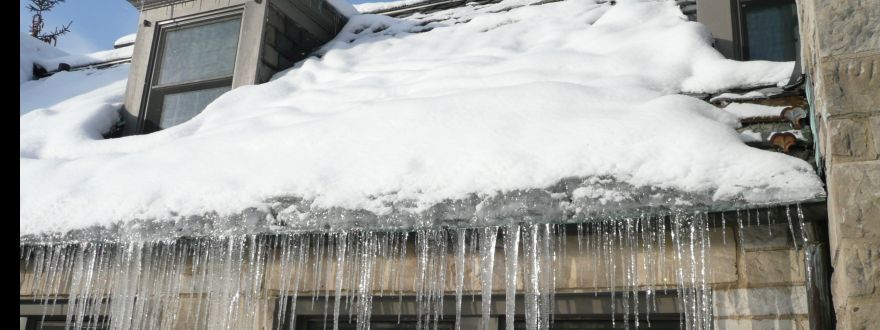
Don’t be a dam fool!
Water damage is a serious thing. Just a small amount of ice melt running down an interior wall, inside a window frame, or down from a skylight can cost you tens of thousands of dollars in just a few hours. Hopefully, you have the right insurance coverage to cover such an event. But, don’t forget the other negative repercussions:
Your home is going to be a mess while a contractor rips your walls/cabinets, windows, skylight possibly electric apart to repair the damaged area. That is not fun! Especially in the dead of winter.
Assuming you have the proper insurance coverage, you still will have a surchargable claim. What does that mean? Put simply, you are going to pay a higher premium for homeowner’s insurance for 3-5 years; regardless if you remain with the same insurance carrier or move to another one.
You still must address the SOURCE of the problem. Where did the water enter in the first place? Even though your homeowner’s insurance will cover the damage caused by the water, it does not cover fixing the actual problem. Another example of this would be a burst pipe that causes water damage. Most all policies will cover the damage done by the water from the burst pipe. However, you must cover the cost of fixing the actual pipe.
What causes an ice dam?
Well, snow on the roof and warmer temperatures. Snow melts on parts of the roof while other parts of the roof are still freezing or frozen. As the snow melts, poor ventilation and poor temperature control in the attic become an issue. The snow melt water looks to get to the lowest point via our old friend “gravity.” If there is something in the water’s way (an ice dam) the water stops flowing and “pools” up. It just sits there in a puddle. That is where the big problems begin. This water needs to get to the gutters; but it is restricted.
How do I know if I have an ice dam?
Well, just because you see icicles forming down your gutter does not necessarily mean you have an ice dam. But, if you see ice where it shouldn’t be; that is a tell tail sign. For example; through your soffit, behind gutters, the edge of your roof…
How do you prevent ice dams?
Well, an ounce of prevention is worth a pound of cure; right?
- Clean gutters before winter
- Ensure your attic is well ventilated. Perhaps with a whole-house fan installed
- Insulate the floor of your attic to reduce the amount of rising heat
- Rake or shovel of snow before it freezes (you can even hire a professional roofer to clear your roof)
- Consider installing electric heating wire specifically designed for problem areas of the roof where ice dams occur
How to remove ice dams?
- If you suspect you have an ice dam or need to melt one to get water moving; try the following:
- Apply calcium chloride or another ice-melting product. Pay attention to what you are using. Normal sidewalk salt sometimes will not do the trick. In more extreme cold you need to pay attention to the melting point that the product you are using is rated at. Most home improvement stores have the good stuff that works at extreme temperatures.
- Use a rake to sweep off the snow if you have a lower-sloped/flat roof



